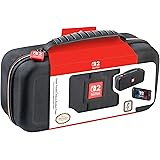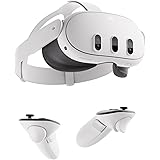The video above delves into a critical examination of two of the best-selling gaming headsets on Amazon: the Turtle Beach Recon 50 and the Turtle Beach Recon 70. Despite their immense popularity, evidenced by over 192,000 combined ratings and an estimated 6 million units sold, the question remains whether these headsets truly deliver on quality or simply capitalize on their accessible price point.
This article will expand upon the video’s analysis, providing a deeper look into the history of Turtle Beach, the nuanced performance characteristics of both the Recon 50 and Recon 70, and practical considerations for gamers navigating the budget headset market. We aim to help you understand what makes these headsets so widely purchased and whether they represent a worthwhile investment for your gaming setup.
The Dominance of Turtle Beach: A Brief History
For nearly two decades, Turtle Beach established itself in the audio industry primarily through music software and sound cards. A pivotal shift occurred in the mid-2000s when the company strategically pivoted to become a leading manufacturer of gaming headsets, particularly for Xbox gamers.
This era saw innovations such as the release of one of the first wireless gaming headsets in 2007. Their subsequent partnerships with major esports entities, like the now-defunct MLG, solidified their presence in the gaming community. Going public in 2014 and acquiring German tech brand Roccat in 2019 further expanded their portfolio and market reach, contributing to their impressive quarter-billion dollars in annual revenue.
Unpacking the Turtle Beach Recon 50 Gaming Headset
Priced at approximately $25, the Turtle Beach Recon 50 often appears as an attractive entry-level option for many gamers. However, a closer inspection reveals several compromises inherent to this budget-friendly design. The build quality, for instance, is predominantly plastic, lacking the metallic reinforcements often found in more durable headsets.
Consequently, users frequently report a creaky and somewhat flimsy feel, which might detract from the overall premium experience. While the earcups offer some degree of tilt and rotation for comfort, the headband cushion is notably minimal, often described as perfunctory. Furthermore, the faux leather earcup cushions, though removable, can be challenging to reattach, sometimes requiring specialized tools.
Comfort and Connectivity Concerns
The earcups on the Recon 50 are relatively small and shallow. This design choice can lead to discomfort for users with larger ears or those that protrude slightly, potentially limiting extended gaming sessions. Imagine if your ears started aching after just a few minutes of play; this is a common complaint.
Regarding connectivity, the headset features a non-removable, somewhat short cable with inline controls, terminating in a combo 3.5mm plug. This setup is ideal for plugging directly into a controller or laptop. Nevertheless, desktop PC users will likely require an extension cable and a combo jack splitter, neither of which are included in the box, adding to the total cost and potential inconvenience.
Microphone Quality: A Surprising Highlight
One of the most remarkable aspects of the Recon 50 is its detachable gooseneck microphone. Despite the headset’s overall budget constraints, the microphone delivers surprisingly clear audio for its price point. It can capture sound quality that often rivals gaming headsets several times its cost under ideal conditions.
However, it is important to note that the mic’s ambient noise rejection is not its strongest suit. It can pick up incidental sounds, such as cable movement or noise from poorly isolated driver housing. Fortunately, these minor shortcomings can often be mitigated with software-based noise cancellation. Reports from users, however, indicate issues with loose connections, static, and even the mic detaching, suggesting quality control inconsistencies.
Sound Signature: A Critical Assessment
Objectively speaking, the sound performance of the Recon 50 has notable drawbacks. As illustrated by frequency response measurements, bass performance falls considerably below the expected volume for well-rounded headphones. This deficiency in low-end rumble is somewhat compensated by an overemphasis in the lower mids, though not entirely successfully.
The most significant issue lies in the upper mids and treble range, specifically a pronounced dip around 5 kHz. This particular frequency dip profoundly impacts the sound, creating a cheap, tinny, and unpleasant listening experience. Critics often struggle to find a gaming justification for this tuning, as it doesn’t demonstrably enhance critical in-game sounds like footsteps. Consequently, the audio quality of the Recon 50 can be compared unfavorably to even some generic hardware store or online-special headsets.
Evaluating the Turtle Beach Recon 70 Gaming Headset
Priced at $15 more than its sibling, the Turtle Beach Recon 70 offers a few key upgrades that warrant consideration. The packaging and included accessories are largely similar to the Recon 50, but the build quality shows a marked improvement. While still primarily plastic, the Recon 70 feels significantly more robust and exhibits considerably less creakiness, addressing a major complaint about its cheaper counterpart.
The earcups are notably thicker and slightly larger, contributing to better comfort. The headband padding also feels more substantial, although a central rib might become noticeable over extended wear. Furthermore, volume adjustments have been conveniently relocated from the cable to the left earcup, improving accessibility during gameplay.
Microphone Performance and Sound Improvement
The microphone on the Recon 70, integrated into a swivel arm on the left earcup, offers an auto-mute function when flipped up, a convenient feature. Regrettably, unlike the Recon 50, it is no longer detachable. More critically, its audio quality, while still acceptable, represents a slight step down from the surprisingly excellent mic of the Recon 50.
Nevertheless, the headphone audio performance sees a substantial improvement. While still struggling somewhat with deep bass reproduction, the mids are much more aligned with a desirable target sound signature. Crucially, the harsh treble dip that plagued the Recon 50 is entirely absent, resulting in a more accurate and far more pleasant listening experience. This makes the Recon 70 a much more viable option for gamers who prioritize sound quality, even at a budget price point.
Understanding Consumer Behavior: Why the High Sales?
Despite some of the technical shortcomings highlighted, the immense popularity of the Turtle Beach Recon 50 and Recon 70 headsets on Amazon begs a deeper question: why are so many people buying them? A primary factor is undeniably their accessible price point.
Furthermore, their reliance on the universally compatible 3.5mm interface ensures they “just plain work” across a wide array of devices, from console controllers to mobile phones and laptops. This plug-and-play simplicity appeals to a broad demographic of casual gamers and those seeking a straightforward solution without complex setups.
Insights from Amazon Reviews
A comprehensive review of Amazon feedback for both headsets reveals several consistent themes. A significant portion of buyers, surprisingly, express satisfaction with the sound quality of both models, including the Recon 50. This suggests that for many, these headsets offer a competitive edge compared to using no headset at all, or a substantial upgrade from very basic bundled earphones.
Nevertheless, a common thread among one-star reviews for both headsets centers on concerns regarding longevity. Many consumers report issues with durability over time, indicating that their budget-friendly nature might come at the cost of long-term reliability. Comfort is another frequently cited issue, which aligns with observations regarding the build quality, particularly for the Recon 50.
For the Recon 50 specifically, microphone complaints were prevalent, including reports of loose connections leading to audio dropouts, static, or the mic falling out. Additionally, some users found the microphone output too quiet, requiring significant boosting in recording software, though this issue appeared less frequently in live communication platforms like Discord.
Recommendations for Budget-Conscious Gamers
Given the analysis, the Turtle Beach Recon 50 is genuinely difficult to recommend wholeheartedly due to its significant audio fidelity issues and questionable comfort. While its microphone is notably strong for its price, the overall listening experience is severely compromised. Imagine relying on a headset that produces tinny, unpleasant sound; this detracts significantly from any gaming immersion.
Therefore, if constrained by budget, opting for the Turtle Beach Recon 70 is a far superior choice. It offers a still-good microphone and considerably better audio reproduction and comfort for a modest additional investment. This makes it a more justifiable purchase for most gamers seeking a balance of price and performance.
However, for those willing to be patient and seek out deals, superior alternatives exist. The HyperX CloudX, often found for a similar price point as the Recon 70 (around $40), offers an all-around decent experience, boasting robust build quality and potentially greater longevity. Investing in such a durable headset could ultimately save money in the long run by reducing the need for frequent replacements.
For gamers considering a wireless solution, the Logitech G435 presents an excellent option, though it is crucial to note its incompatibility with Xbox consoles. Furthermore, purchasing the G435 from retailers other than Logitech directly, especially during sales, typically yields better value. When considering any Turtle Beach Recon 50 or Recon 70 gaming headset, weigh these factors carefully to make an informed decision.









